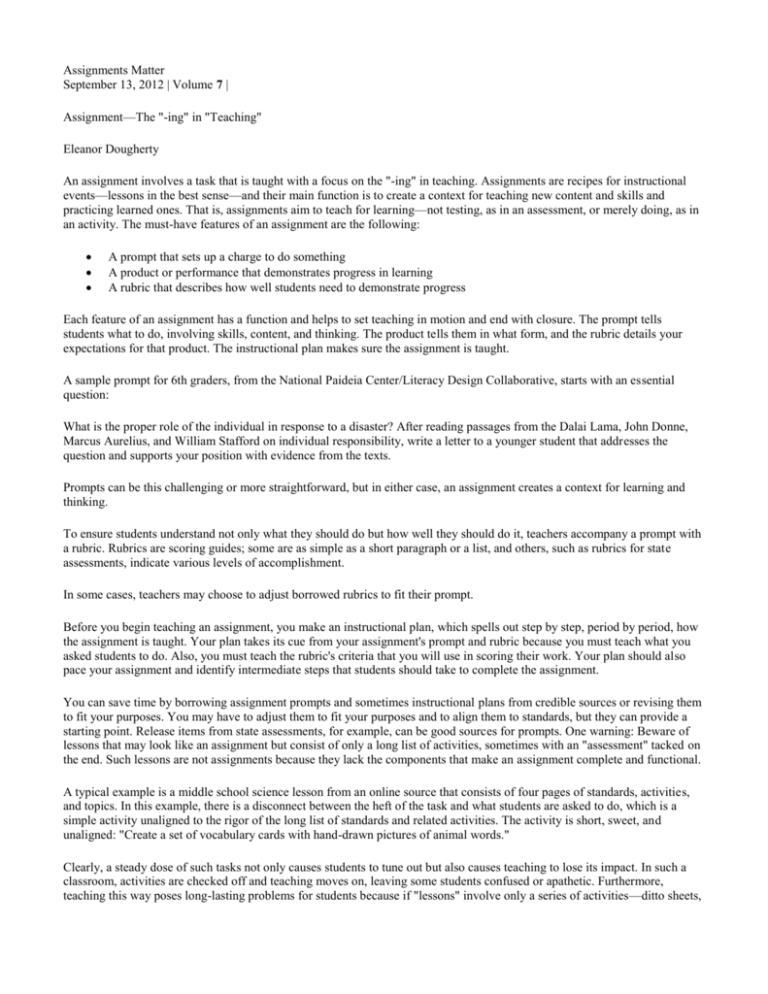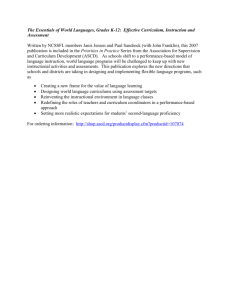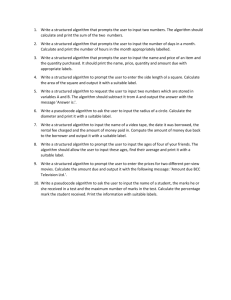
Assignments Matter
September 13, 2012 | Volume 7 |
Assignment—The "-ing" in "Teaching"
Eleanor Dougherty
An assignment involves a task that is taught with a focus on the "-ing" in teaching. Assignments are recipes for instructional
events—lessons in the best sense—and their main function is to create a context for teaching new content and skills and
practicing learned ones. That is, assignments aim to teach for learning—not testing, as in an assessment, or merely doing, as in
an activity. The must-have features of an assignment are the following:
A prompt that sets up a charge to do something
A product or performance that demonstrates progress in learning
A rubric that describes how well students need to demonstrate progress
Each feature of an assignment has a function and helps to set teaching in motion and end with closure. The prompt tells
students what to do, involving skills, content, and thinking. The product tells them in what form, and the rubric details your
expectations for that product. The instructional plan makes sure the assignment is taught.
A sample prompt for 6th graders, from the National Paideia Center/Literacy Design Collaborative, starts with an essential
question:
What is the proper role of the individual in response to a disaster? After reading passages from the Dalai Lama, John Donne,
Marcus Aurelius, and William Stafford on individual responsibility, write a letter to a younger student that addresses the
question and supports your position with evidence from the texts.
Prompts can be this challenging or more straightforward, but in either case, an assignment creates a context for learning and
thinking.
To ensure students understand not only what they should do but how well they should do it, teachers accompany a prompt with
a rubric. Rubrics are scoring guides; some are as simple as a short paragraph or a list, and others, such as rubrics for state
assessments, indicate various levels of accomplishment.
In some cases, teachers may choose to adjust borrowed rubrics to fit their prompt.
Before you begin teaching an assignment, you make an instructional plan, which spells out step by step, period by period, how
the assignment is taught. Your plan takes its cue from your assignment's prompt and rubric because you must teach what you
asked students to do. Also, you must teach the rubric's criteria that you will use in scoring their work. Your plan should also
pace your assignment and identify intermediate steps that students should take to complete the assignment.
You can save time by borrowing assignment prompts and sometimes instructional plans from credible sources or revising them
to fit your purposes. You may have to adjust them to fit your purposes and to align them to standards, but they can provide a
starting point. Release items from state assessments, for example, can be good sources for prompts. One warning: Beware of
lessons that may look like an assignment but consist of only a long list of activities, sometimes with an "assessment" tacked on
the end. Such lessons are not assignments because they lack the components that make an assignment complete and functional.
A typical example is a middle school science lesson from an online source that consists of four pages of standards, activities,
and topics. In this example, there is a disconnect between the heft of the task and what students are asked to do, which is a
simple activity unaligned to the rigor of the long list of standards and related activities. The activity is short, sweet, and
unaligned: "Create a set of vocabulary cards with hand-drawn pictures of animal words."
Clearly, a steady dose of such tasks not only causes students to tune out but also causes teaching to lose its impact. In such a
classroom, activities are checked off and teaching moves on, leaving some students confused or apathetic. Furthermore,
teaching this way poses long-lasting problems for students because if "lessons" involve only a series of activities—ditto sheets,
reading circles, jigsaws, graphic organizers, underlining textbook chapters, or making book covers—students cannot learn to
the depth of understanding necessary to do well on a follow-up assessment.
These tasks cannot claim to be aligned to standards, so they are a waste of instructional time for both teachers and students. An
important function of assignments involves alignment not only to standards but also to assessments, particularly end-of-unit or
end-of-term assessments, so that students are prepared and confident in testing situations.
Source: From Assignments Matter: Making the Connections That Help Students Meet Standards (p. 23–25), by E. Dougherty,
2012, Alexandria, VA: ASCD. Copyright 2012 by ASCD. Reprinted with permission.
Eleanor Dougherty is an education consultant and author who has taught in public, private, and postsecondary institutions;
worked in the U.S. Department of Education and the Education Trust; and received grants from the Gates Foundation and the
Panasonic Foundation. Her work over the last two decades has focused on literacy and its role in the larger curriculum. She is
currently involved in developing a national literacy strategy, Literacy Design Collaborative, to help teachers in the core
subjects align their practice to the Common Core State Standards.
ASCD Express, Vol. 7, No. 25. Copyright 2012 by ASCD. All rights reserved. Visit www.ascd.



